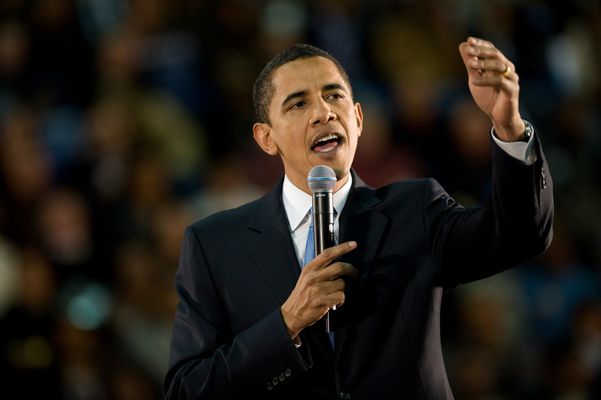13.2.2
Legislative
Legislative Process
Legislative Process
The Constitution grants all legislative powers to Congress. Bills (pieces of legislation) must pass through both chambers and needs the signature of the president to become law.


Initiation of bills
Initiation of bills
- Bills can be initiated by any member of Congress but are usually initiated by party leaders in Congress or committee chairs, often on behalf of the president.
- Bills need to be signed by a sponsor - and there can be many co-sponsors.


Committee stage
Committee stage
- After they have been initiated (the first reading) bills are passed on to the relevant committees (in both House and Senate) where they are debated and amended (or ‘marked up’).
- Committees can choose whether or not to ‘hear’ a bill, and bills that are not heard will die in committee.


Legislation brought to the floor
Legislation brought to the floor
- If a bill passes committee stage it goes to the House Rules Committee or the Senate leadership to be scheduled for voting and debate. If a bill is not scheduled in both houses it will die.
- Once a bill is scheduled it has a second reading in both houses where it is further debated and amended, this is followed by a vote which the bill must pass in both houses for it to continue.
- The third reading is the final chance to debate the bill before a final vote.


Conference stage
Conference stage
- As legislation passes through both chambers at the same time, there are often two very different versions of the bill which need to be reconciled.
- Sometimes a conference committee is set up to reach a compromise on a final bill, other times this is done by congressional leadership.
- The reconciled bill must then pass a vote in both chambers, if it fails in one chamber then it will die.


The president
The president
- Once a bill has passed all of these stages it must be signed into law by the president. A president has the power to veto (not sign) a bill and send it back to Congress.
- A 2/3 vote in both chambers of Congress can override a veto, as happened to Obama in 2016 with the Justice Against Sponsors of Terrorism Act.
Strengths and Weaknesses of the Legislative Process
Strengths and Weaknesses of the Legislative Process
The legislative process has strengths of having extra checks and balances and ensuring high quality legislation. However, weaknesses include that the process can be long and ineffective.


Effective
Effective
- The fact that bills must pass through both houses gives extra checks and balances and prevents potential tyranny.
- Rules in the Senate such as the filibuster protect state's rights.
- If neither party in the Senate has 60 seats, the minority party can filibuster, meaning that the minority views must be taken into account and compromise reached in order for the majority party to get 60 votes and break the filibuster.
- The long process used to pass legislation means that bills are not rushed and should be of a higher quality, with more debate and consideration.


Not effective: gridlock
Not effective: gridlock
- The increased use of the filibuster in the Senate now means that on most occasions, legislation needs 60 votes to pass in the Senate.
- Increased partisanship in recent years has led to gridlock under divided governments and has even led to government shutdowns in 2013 and 2018.
- Increased partisanship and subsequent gridlock have also led to a low output of legislation with the 112th Congress (2010-2012) passing only 283 pieces of legislation, the lowest in history, and subsequent Congresses doing little better.


Not effective
Not effective
- Many argue that committees, in particular committee chairs, have too much power over the legislation that passes through.
- Pork barrelling is when members of Congress allocate federal money for projects in and benefits to their own constituencies. This funding usually only serves local interests.
- Pork barrelling is often attached to other pieces of legislation as part of a deal to get a bill passed.
- During several stages of the legislative process, particularly the conference stage, key parts of the bill may be removed as part of compromises made get the bill passed.
Differences in the Legislative Processes
Differences in the Legislative Processes
The legislative processes in the House and Senate have a few differences.


Differences in each chamber: House
Differences in each chamber: House
- Representatives in the House have restricted time to speak on the floor.
- This may be limited during “controlled” time, where members are chosen to speak for or against a bill, and given a specified time and order in which to speak.
- Otherwise, this time is not controlled, and speakers are granted permission from the chair of the debate, and usually have five minutes to speak.
- During a debate, representatives must limit their speeches to the subject being debated.


Differences in each chamber: House
Differences in each chamber: House
- Only the House can initiate bills that involve raising revenue, and the Senate can propose amendments.
- This makes sure that the ‘power of the purse’ is held by the legislative body that is most representative of the public.


Differences in each chamber: Senate
Differences in each chamber: Senate
- Senators can speak for unlimited time on any topic they wish, which can be used to filibuster a bill.
- A filibuster ends by three-fifths of the Senators voting to invoke cloture.
- Senators can’t make more than two speeches on the same day on a bill.
- The Senate cannot introduce a money bill.
1Democracy & Participation
1.1Representative & Direct Democracy
1.2Wider Franchise & Suffrage
1.3Pressure Groups & Other Influences
2Political Parties
2.1How Political Parties Work
2.2Established Political Parties
2.3Emerging & Minor Political Parties
3Electoral Systems
3.1Different Electoral Systems
3.2Referendums & How They Are Used
4Voting Behaviour & the Media
5Conservatism
5.1Conservatism: Core Ideas & Principles
5.2Conservatism: Differing Views & Tensions
6Liberalism
6.1Liberalism: Core Ideas & Principles
6.2Differing Views And Tensions Within Liberalism
7Socialism
7.1Socialism: Core Ideas & Principles
7.2Differing Views And Tensions Within Socialism
8The UK Constitution
8.1Nature & Sources of UK Constitution
8.2Constitutional Change since 1997
8.3Role & Powers of Devolved UK Bodies
9The UK Parliament
9.1Houses of Parliament
9.2Comparative Powers
9.3Legislative Process
10The Prime Minister & the Executive
10.1The Executive
10.2Ministerial Responsibility
10.3Prime Minister & the Cabinet
10.3.1Role of the Prime Minister
10.3.2Prime Minister's Powers
10.3.3Limits on the Prime Minister's Powers
10.3.4Role of the Cabinet
10.3.5Prime Minister & Cabinet: Relations
10.3.6Prime Minister & Cabinet: Balance of Power
10.3.7Prime Minister & Cabinet: Case Studies
10.3.8End of Topic Test - PM & Cabinet
10.3.9Top Grade AO3/4 - PM & Cabinet
11Relationships Between Government Branches
11.1The Supreme Court
11.2Parliament & Executive Relations
11.3The European Union & the UK
11.4Sovereignty in the UK Political System
12US Constitution & Federalism
12.1Nature of the US Constitution
12.2Principles of the US Constitution
12.3Federalism
13US Congress
13.1Structure of Congress
13.2Functions of Congress
14US Presidency
14.1Presidential Power
14.2The Presidency
14.3Interpretations & Debates of the US Presidency
15US Supreme Court & Civil Rights
15.1Nature & Role of Supreme Court
15.2Supreme Court Appointment Process
15.3The Supreme Court & Public Policy
15.4Protection of Civil Liberties & Rights
15.5Debates & Interpretations of the Supreme Court
16US Democracy & Participation
16.1Presidential Elections
16.2Electoral College
16.3Electoral Campaigns
16.4Incumbency
16.5Democrats & Republicans
16.6Internal Conflict & Ideology
16.7Support & Demographics
17Comparing Democracies
17.1Theoretical Approaches
17.2UK & USA Similarities & Differences
17.2.1Constitution: Nature
17.2.2Constitution: Provisions & Principles
17.2.3Federal System & Devolution
17.2.4Legislative: Lower Houses of Government
17.2.5Legislative: Upper Houses of Government
17.2.6Legislative: Powers & Functions
17.2.7Executive
17.2.8Supreme Court
17.2.9Supreme Court: Judicial Independence
17.2.10Civil Rights
17.2.11Civil Rights: Interest Groups
17.2.12Party Systems & Parties
17.2.13Campaign Finance & Pressure Groups
17.2.14End of Topic Test - Comparing UK & US
17.2.15Application Questions - UK & USA
18Feminism
18.1Feminism: Core Ideas & Principles
18.2Different Types of Feminism
19Nationalism
19.1Nationalism: Core Ideas & Principles
19.2Different Types of Nationalism
Jump to other topics
1Democracy & Participation
1.1Representative & Direct Democracy
1.2Wider Franchise & Suffrage
1.3Pressure Groups & Other Influences
2Political Parties
2.1How Political Parties Work
2.2Established Political Parties
2.3Emerging & Minor Political Parties
3Electoral Systems
3.1Different Electoral Systems
3.2Referendums & How They Are Used
4Voting Behaviour & the Media
5Conservatism
5.1Conservatism: Core Ideas & Principles
5.2Conservatism: Differing Views & Tensions
6Liberalism
6.1Liberalism: Core Ideas & Principles
6.2Differing Views And Tensions Within Liberalism
7Socialism
7.1Socialism: Core Ideas & Principles
7.2Differing Views And Tensions Within Socialism
8The UK Constitution
8.1Nature & Sources of UK Constitution
8.2Constitutional Change since 1997
8.3Role & Powers of Devolved UK Bodies
9The UK Parliament
9.1Houses of Parliament
9.2Comparative Powers
9.3Legislative Process
10The Prime Minister & the Executive
10.1The Executive
10.2Ministerial Responsibility
10.3Prime Minister & the Cabinet
10.3.1Role of the Prime Minister
10.3.2Prime Minister's Powers
10.3.3Limits on the Prime Minister's Powers
10.3.4Role of the Cabinet
10.3.5Prime Minister & Cabinet: Relations
10.3.6Prime Minister & Cabinet: Balance of Power
10.3.7Prime Minister & Cabinet: Case Studies
10.3.8End of Topic Test - PM & Cabinet
10.3.9Top Grade AO3/4 - PM & Cabinet
11Relationships Between Government Branches
11.1The Supreme Court
11.2Parliament & Executive Relations
11.3The European Union & the UK
11.4Sovereignty in the UK Political System
12US Constitution & Federalism
12.1Nature of the US Constitution
12.2Principles of the US Constitution
12.3Federalism
13US Congress
13.1Structure of Congress
13.2Functions of Congress
14US Presidency
14.1Presidential Power
14.2The Presidency
14.3Interpretations & Debates of the US Presidency
15US Supreme Court & Civil Rights
15.1Nature & Role of Supreme Court
15.2Supreme Court Appointment Process
15.3The Supreme Court & Public Policy
15.4Protection of Civil Liberties & Rights
15.5Debates & Interpretations of the Supreme Court
16US Democracy & Participation
16.1Presidential Elections
16.2Electoral College
16.3Electoral Campaigns
16.4Incumbency
16.5Democrats & Republicans
16.6Internal Conflict & Ideology
16.7Support & Demographics
17Comparing Democracies
17.1Theoretical Approaches
17.2UK & USA Similarities & Differences
17.2.1Constitution: Nature
17.2.2Constitution: Provisions & Principles
17.2.3Federal System & Devolution
17.2.4Legislative: Lower Houses of Government
17.2.5Legislative: Upper Houses of Government
17.2.6Legislative: Powers & Functions
17.2.7Executive
17.2.8Supreme Court
17.2.9Supreme Court: Judicial Independence
17.2.10Civil Rights
17.2.11Civil Rights: Interest Groups
17.2.12Party Systems & Parties
17.2.13Campaign Finance & Pressure Groups
17.2.14End of Topic Test - Comparing UK & US
17.2.15Application Questions - UK & USA
18Feminism
18.1Feminism: Core Ideas & Principles
18.2Different Types of Feminism
19Nationalism
19.1Nationalism: Core Ideas & Principles
19.2Different Types of Nationalism
Unlock your full potential with Seneca Premium
Unlimited access to 10,000+ open-ended exam questions
Mini-mock exams based on your study history
Unlock 800+ premium courses & e-books